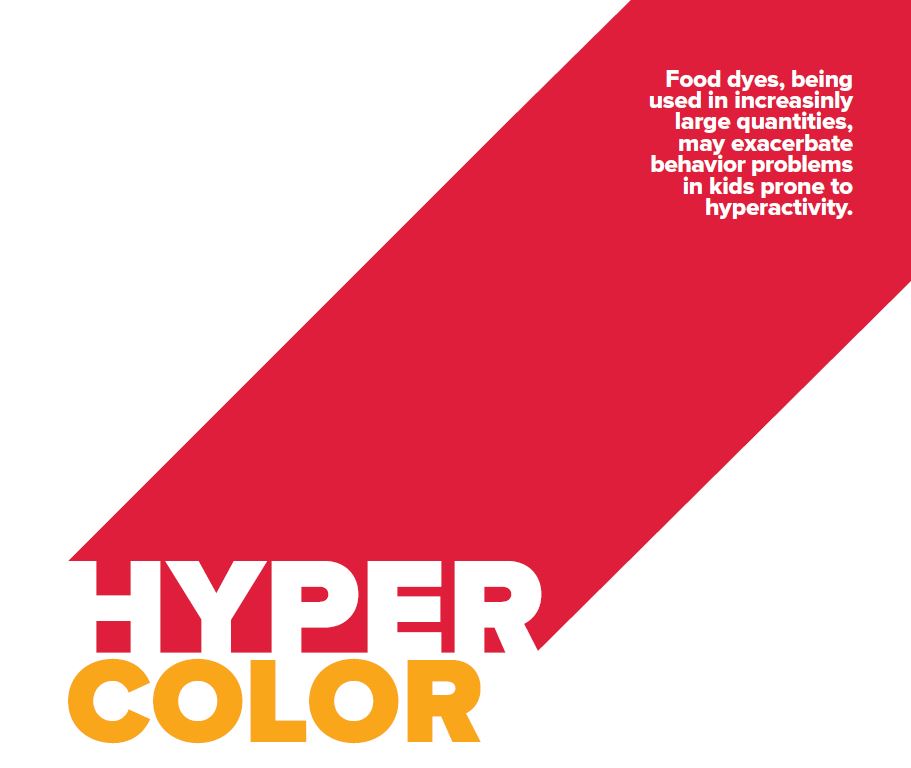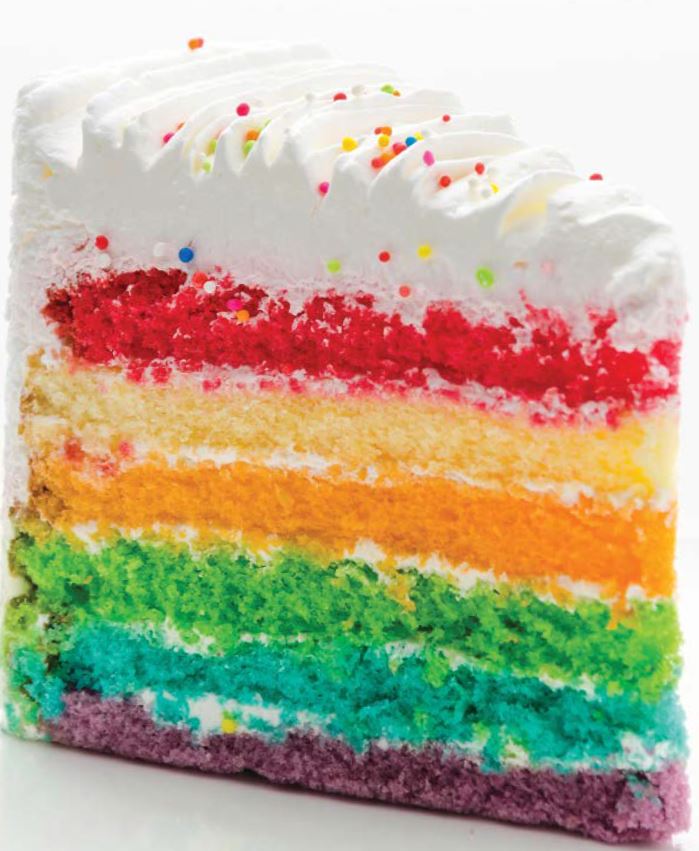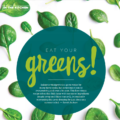Sonia Walters knew something needed to change. Her two daughters, ages 4 and 7, were experiencing a range of health problems, including cyclic vomiting syndrome (known as CVS), skin rashes, chronic stomachaches and hypoglycemia symptoms, not to mention mood swings and irritability.
After several unsuccessful visits to the doctor to address various symptoms, the Bloomington mother and her husband made the decision to switch their family to a whole-foods, plant-based diet.
Improvements in her family’s health were impressive.
“My younger daughter’s chronic tummy aches and skin rashes suddenly resolved, and we were able to reduce the frequency of my older daughter’s CVS from a few times a month to a few times a year,” Walters said.
Although the dietary changes Walters implemented for her family were wide-ranging (she not only cut out food dyes but also artificial sweeteners, dairy and most processed foods), the results she saw might encourage many of us to re-think our approach to the lunch box and the dinner table.
Is the standard American diet making us sick? And if so, what elements are particularly troubling?
DYES ON THE RISE
Dyes have been at the forefront lately — along with wheat, dairy and, of course, sugar, too.
Used to brighten the color of food and other consumables, dyes can be found in a surprising array of foods kids love such as cereals, yogurt, crackers and breads, including many items that aren’t particularly colorful.
Most supermarket pickles contain yellow dye. Some types of Kraft Macaroni & Cheese contain dye. (Some don’t, so you have to check each box.) One popular chocolate cereal label we checked included Red 40, Yellow 5 and 6, Blue 1 and “Other Color Added.”
Even white marshmallows contain blue food dye to achieve their bright-white hue.
Dyes are also common in toothpaste and prescription medications.
In other words, your child has multiple opportunities every day to consume a variety of artificial food dyes.
The problem is that it is very difficult with our modern diets to eliminate all those chemicals because they are so ubiquitous in our food.
— Dr. Carrie Borchardt
Though the types of dyes have changed little since the 1950s, the amount of dye consumed in the U.S. has risen dramatically, according to a 2014 Purdue University study, which found a five-fold increase in the amount of dye certified by the FDA for use between 1950 and 2012.
In other words, it’s not the dyes that are new. It’s the dosage, so to speak, in the American diet.
U.S. children, especially those who frequently consume dyed beverages, could easily consume an estimated 100 to 200 milligrams of dye per day, according to the recent study.
According to the Center for Science in the Public Interest, which reported on the Purdue study earlier this year, “a child who eats 2 cups of Kraft Macaroni & Cheese, a small bag of Skittles and 8 ounces of Crush Orange will consume 102 milligrams of artificial dye.”
Purdue researchers singled out popular name brands to figure out how much dye was present in certain products (not just which dyes): Skittles and M&M’s, dyed with Blue 1, Blue 2, Yellow 5, Yellow 6, and Red 40, had the highest levels found in common candies — 33.3 mg per serving of Skittles, 29.5 mg in M&M’s Milk Chocolate, according to CSPI.
Of all the cereals tested, the one with the most artificial dyes was Cap’n Crunch’s Oops! All Berries, with 41 mg.
RESEARCH IS LIMITED
But is that so bad? What does the research about kids and dyes tell us? Well, there isn’t a giant bank of information just yet.
So far, the most famous (and most controversial) study is a randomized, double-blinded, placebo-controlled study conducted in 2007 that looked at the intake of artificial food coloring and additives and childhood behavior.
In the study, which involved 300 kids, children were given dyed beverages. Half of the participants were 3-year-olds. Half were 8- and 9-year-olds.
The study found that exposure to artificial colors and a sodium benzoate preservative resulted in increased hyperactivity for both groups.
Known as the Southampton study, the research, published in The Lancet, has been embraced by some as proof that food dyes negatively impact children’s behavior.
Others have criticized it for some of its possibly problematic methodology: For example, the dyes tested were mixed together in drinks containing four dyes each, making it difficult to determine which one(s) might be causing a problem.
The British Food Standards Agency — which provided funding for the Southampton study — is against food dyes and has spoken out about the connection between the consumption of food dyes and hyperactive behavior in children.
In countries of the European Union, a mandatory warning must be included on any food or drink that contains any of six artificial food colors.
The label must also carry the warning that the product “may have an adverse effect on activity and attention in children.” The U.K.-based agency is also encouraging manufacturers to find natural alternatives.
Eliminating artificial food dyes may be one step in an overall approach to addressing children’s behavior issues.
WHAT ABOUT ADHD?
Stateside, no such warnings are required.
The FDA’s Food Advisory Committee, having reviewed a variety of data (including the Southampton study), found no established link between consumption of food dyes and adverse behavioral effects in children.
It voted against the need for additional information on the product labels of foods with color additives, but did recommend additional safety studies be conducted.
In 2011, the U.S. Food and Drug Administration published a statement saying the FDA doesn’t believe artificial food dyes cause hyperactivity in children in the general population. The FDA added, however, that the consumption of food dyes might exacerbate behavior problems in children diagnosed with Attention Deficit Hyperactivity Disorder (ADHD) because they may have a unique intolerance to them.
Though the cause of ADHD is unknown, experts agree there’s a strong genetic component to the affliction. Factors as diverse as low birth weight and exposure to environmental toxins like lead are thought to play a role in the disorder, too.
THE MEDICAL PERSPECTIVE
So what should you do if your child is experiencing behavior problems?
Dr. Carrie Borchardt, a child psychiatrist with Children’s Hospitals of Minnesota, suggests a balanced approach.
“My understanding is that there is some good research to show that if you eliminate dyes and preservatives from the diets of some children who have ADHD symptoms, some of them significantly improve,” Borchardt said. “The problem is that it is very difficult with our modern diets to eliminate all those chemicals because they are so ubiquitous in our food. I do not think I have ever seen a child with ADHD where diet modification made a clear significant difference.”
Eliminating artificial food dyes may be one step in an overall approach to addressing children’s behavior issues.
“I would encourage all families to eat as healthy a diet as possible and to make choices for healthy, fresh foods, avoiding unnecessary chemicals as much as possible,” Borchardt said. “Cooking at home is much healthier than eating out at restaurants or eating highly processed food. Those health guidelines are good for all of us.”
Walters agrees: “Eating a plant-based diet and eliminating convenience foods has reduced my children’s mood swings and irritability,” Walters said. “It’s been amazing to see the improvements, and I recommend it for everyone. It is worth the change.”
COMMON FOOD DYES
Red 3 (Erythrosine B)
Red 40 (Allura Red)
Yellow 5 (Tartrazine)
Yellow 6 (Sunset Yellow)
Blue 1 (Brilliant Blue)
Blue 2 (Indigotine, Indigo
Carmine) Green 3 (Fast
Green FCF) Orange B

























